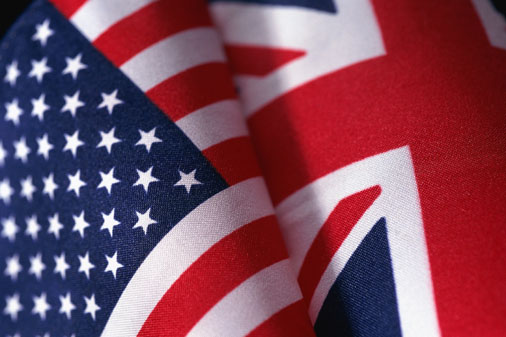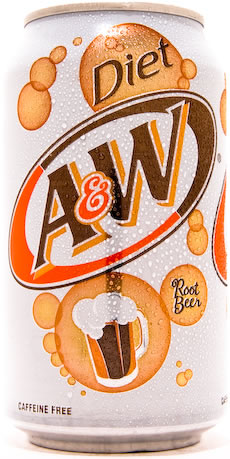Provence: Expat Foods & Markets

- SUBSCRIBE
- ALREADY SUBSCRIBED?
BECOME A BONJOUR PARIS MEMBER
Gain full access to our collection of over 5,000 articles and bring the City of Light into your life. Just 60 USD per year.
Find out why you should become a member here.
Sign in
Fill in your credentials below.
 Here in St. Rémy de Provence we used to have a store called Best of British, which sold all sorts of English products such as Walker’s shortbread, Twining’s Tea, marmite and steak-and-kidney pies. It also had a large selection of used books in English, with a wonderful pricing policy: one book free for every two you drop off. (You could pay for books too, of course, but the owner, Nichola Throup, who everyone just calls Nicci, clearly prefered to trade. “Oh, just take them,” she’d say cheerfully when I’d plop a stack of books on the counter and ask the price. “Just bring them back when you’re done.”)
Here in St. Rémy de Provence we used to have a store called Best of British, which sold all sorts of English products such as Walker’s shortbread, Twining’s Tea, marmite and steak-and-kidney pies. It also had a large selection of used books in English, with a wonderful pricing policy: one book free for every two you drop off. (You could pay for books too, of course, but the owner, Nichola Throup, who everyone just calls Nicci, clearly prefered to trade. “Oh, just take them,” she’d say cheerfully when I’d plop a stack of books on the counter and ask the price. “Just bring them back when you’re done.”)
For the large English expat community in this part of Provence, Best of British was a blessing, its shelves lined with comfort foods such as Batchelor’s mushy peas and McVities Mini Chocolate Hob Nobs—at prices only slightly above normal. With all its unknown brands and strange-sounding foods like trifle and haggis, the store seemed almost as “exotic” to me (an American), as the French grocery was when I first arrived. Here, potato chips are crisps, cookies are biscuits, sausages are bangers–and you could buy all the sauces and spices you need for dishes such as chicken tikka masala, thanks to the huge popularity of Indian food throughout the U.K.
My friends sometimes called the store “The British” or “The English.” For example: “Where did you find your babysitter?”
“Her name was on the board at The English.”
It was a few days before Christmas when I ducked in to pick up something for a friend. I was chatting with Nicci near the scone mix when a man approached; “I hear an American accent!” was all he said. Turns out it was Nicci’s husband, Graham, and he had just received a shipment of Reese’s Peanut Butter Cups, Mountain Dew, Marshmallow Fluff and other brand names from home sweet home.
“Come in the back and have a look!” he beckoned, and so I followed, excited and a bit nervous, like a tourist lured down an alley by the promise of a deal on rugs or diamonds.
And there it was near the loading dock, at the bottom of a stack of mini-cases of soda: a 12-pack of Diet A&W. In a flash, I could taste the root beer floats I’d be serving in my garden come summer and I blurted out “A&W! I’ll take the A&W!” like I was totally barking mad. (That’s something The English like to say, by the way.)
Speaking of cultural differences, most French people have never heard of root beer because it doesn’t exist in France. And I recently found out why, when, at a picnic back home in the States, I offered a French friend a taste. I couldn’t quite make out his words, what with all the pretend gagging noises he was making, but it seems that the flavor reminds the French of something they’re given as kids at either the doctor or dentist’s office.
“No, I can’t remember that ever,” said another French friend, Hélène, when I asked if she had ever heard of root beer. “And if I like the taste, I can’t know. But for a French ear, this name is a little bit strange. Has this beer a special effect on your body?”
A quick survey of other Europeans revealed no Italians, English or Irish among root beer’s fans either. “Oh no, no one here likes it,” says my friend Margaret up in Galway, Ireland. “Wintergreen is the flavor, I seem to remember. Awful stuff. Great to rub on sore muscles as long as you never have to drink it.”
“It’s gross,” chimed in Jenny, by email, from London.
Meanwhile, back in back at Best of British, Graham was trying to tempt me further–Tootsie Rolls? Heinz Ketchup? Aunt Jemima Pancake Mix? Hershey Bars!–but I only had eyes for root beer. He carried it to the register for me.
So there I was, boring Nicci with tales of childhood car trips “up north” and stops at the A&W drive in, when she smiled sweetly and gave me my total: 20€ plus tax. I was so stunned I just kept on talking: Oh, the splendid greasy crispness of the onion rings! The chilly frost on the heavy glass mugs! That wonderful sandy feeling you have after a long day at the lake! Proust with his madeleines had nothing on me. The way I was carrying on, you’d never know that every grocery store and most gas stations in America sold A&W, often on two-for-one special. My mother bought it by the case whenever I came home for a visit—and I was heading for Wisconsin in just two weeks.
But after making such a fuss, I could hardly say “no thanks” to Nicci, especially when she had politely let me drone on about the charms of the A&W: the tray that clipped onto the driver’s window; the way my brothers liked to swipe the mugs, one of which I still have. (I can only imagine how bored Nicci used to get listening to all her customers’ “when I was a kid” anecdotes about favorite foods.) While she handed me my change, she and I beamed at each other as though she were presenting me with a wondrous gift, instead of a product I could easily live without at a markup of something like 700 percent. I tucked the little box under my arm and left. C’est la vie, I thought. I decided the A&W was a Christmas gift to myself, took it home, put it in the pantry and forgot about it.
And then summer hit and I remembered the booty. I pulled it out, popped open a can and settled into the garden to savor it. And that’s when I saw things more clearly.
Cost of 12 cans, with the dollar at its then all-time low? $31 and change.
The realization that a motherly British shopkeeper in a small French town had sold, to a nostalgic American, an overpriced product packaged in New Jersey for a Texas-based soft-drinks company–now owned by an enormous British conglomerate–because it reminded her of long-ago Wisconsin summers?
Priceless.
Julie Mautner Bio
Julie Mautner is an American food, wine and travel writer living most of the year in the South of France. She was a founding editor of Food Arts Magazine in New York and was its executive editor for ten years. Since she resigned in 1998 to freelance, Julie has produced hundreds of articles for top magazines and websites including Travel & Leisure, Bon Appetit, Food & Wine, Gourmet, Epicurious.com, Conde Nast Traveller UK, Elle Décor UK, Financial Times, New York Magazine and House Beautiful. She also handles a wide range of writing, marketing and culinary projects for international cruise, hotel and restaurant clients. Since 2008, Julie has been publishing a popular blog about France called ProvencePost.com. Her first book, The Food Network South Beach Wine & Food Festival Cookbook (co-authored with Lee Schrager), will be published by Random House/Clarkson Potter in November 2010.


